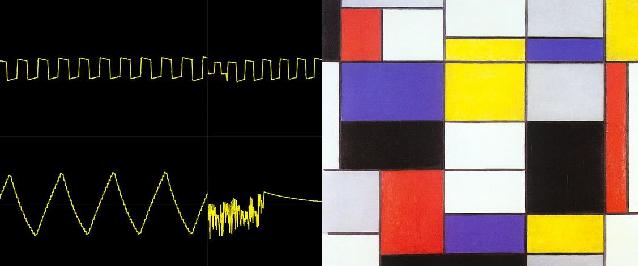What does 20th century Mondrian art have in common with 21st century video game music?
Whether video games are art is a discussion that’s been raging online for years. Adding to the discussion today, Richard Rosenbaum at Overthinking It connects chiptunes (sometimes called 8-bit music or just, generically, video game music) to Mondrian art, Roy Lichtenstein, and Scott Pilgrim.
Both Mondrian and chiptune composers used geometric shapes and “digitalness” to evoke a new kind of reaction to art; when previously much of art was representational, both chiptunes and De Stijl subverted attempt to appear “organic” and chose instead to represent a more idealized version of reality (“ideal” in the Platonic sense). In both cases, the end result is a synthetic-seeming artifact that nevertheless is a more authentic expression of what underlies reality on a level we don’t normally appreciate - for Mondrian, this was the spiritual perfection of straight lines and primary colours; for chiptunes, it was the squares and triangles that combine in nature into the round sounds we hear every day.
A postscript: If you’ve listened to chiptunes and feel they aren’t for you, don’t swear off video game music entirely. Like art, it’s wide ranging. Jim Guthrie’s work is about as far as you can get from 8 bit music & his album for the game Sword & Sworcery is a personal favorite of mine.
And if you do like video game music and are looking for more, there’s a sale on at gamemusicbundle.com now.






Stay Connected